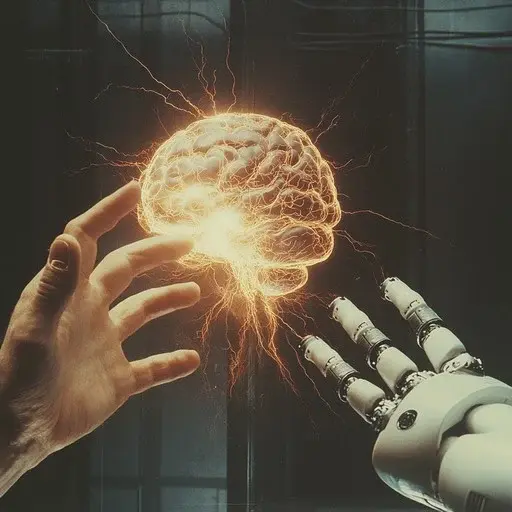What is Neuroscience?
- Marcela Emilia Silva do Valle Pereira Ma Emilia
- Jun 17
- 4 min read
Updated: Jun 18
The word “neuroscience” is becoming more and more common in our vocabulary. It shows up in books, talks, social media, companies — and even memes.But after all… what does neuroscience really mean?
“Is it a branch of medicine?”
“So it must be part of psychology?”
“Oh, probably just another fancy word for coaching...”
“No, no… it’s that thing that makes robot brains work, right?”
Hold on! In this article, we’ll explore — in a clear and accessible way — what neuroscience is, what it studies, why it’s so important… and of course, what it is not.
Get ready to dive into a universe that connects thoughts, biology, emotions, behaviors, decisions — and yes, even a hint of technology.
🔍 What does neuroscience study?

Neuroscience is the scientific field dedicated to studying the nervous system — with special focus on the brain, but also including the spinal cord, peripheral nerves, and their connections throughout the body.Its main goal is to understand how biological structures and processes result in mental and behavioral functions such as: perception, memory, language, emotions, attention, learning, sleep, decision-making, and many more.
Neuroscience investigates everything from the molecular and cellular levels of the brain to complex neural systems, human behavior, and cognition. That’s why it draws on many disciplines — like biology, physiology, chemistry, psychology, mathematics, physics, engineering, and social sciences — forming a multidisciplinary and integrative field.
🧠 The branches of neuroscience

There are many branches within neuroscience — from the more clinical ones, like those studying neurological diseases, to applied ones that analyze consumer behavior or the emotional impact on decision-making.
Modern neuroscience spans areas such as:
• Cognitive neuroscience – studies mental processes and higher functions
• Behavioral neuroscience – how the brain influences behavior
• Computational neuroscience – simulating neural networks and analyzing brain data
• Clinical neuroscience – focuses on diagnosing, treating, and rehabilitating neurological and psychiatric disorders
• Applied neuroscience – uses neuroscientific knowledge in education, business, design, marketing, and public health
The truth is: if a brain is involved… neuroscience is there to help explain it.
🚫 What neuroscience is NOT

Now that we’ve talked about what it studies — let’s also clarify what neuroscience definitely is not.
Neuroscience studies everything related to how the nervous system works, whether at the molecular, cellular, structural, functional, behavioral, or cognitive level.It seeks to answer questions like:
• How does the brain store memories?
• What happens neurologically when we feel fear?
• How is a habit formed?
• Which brain areas are involved in decision-making?
• How does the nervous system adapt after an injury?
In other words: neuroscience does not study “brain magic” or guess behaviors. It doesn’t read minds, doesn’t offer miracle formulas for success, and it definitely doesn’t boil down to motivational phrases with the word “neuron” thrown in.
Even though neuroscientific knowledge can be applied in areas like coaching, marketing, leadership, or education — when neuroscience is involved, it must be based on real scientific evidence, not assumptions or trends.
🧪 Neuroscience is science

Neuroscience is an empirical science, grounded in research, data, and experimentation. It still has many unanswered questions — and that’s exactly what makes it so fascinating.
Neuroscience matters because it helps us understand what makes us human — our thoughts, emotions, habits, decisions, pain, dreams, and behaviors.
But it’s not about “feeling” or “guessing” how the brain works. Neuroscience is empirical, meaning its knowledge is built through observation, experimentation, and concrete, replicable data.
Neuroscientific studies use rigorous methods to test hypotheses about brain and behavioral functions. This includes everything from lab-based molecular analyses to human experiments using advanced tools such as:
• EEG (electroencephalography) – records real-time brain electrical activity
• fMRI (functional magnetic resonance imaging) – shows which areas of the brain are activated during tasks
• Eye-tracking – tracks eye movements to study attention, reading, and visual reactions
• TMS (transcranial magnetic stimulation) – used to stimulate specific brain regions
• Hyperscanning – analyzes synchrony between brains during social interactions
🌐 Neuroscience in the real world
Also, the data analyzed comes from real and diverse populations, from various contexts and cultures. Today’s neuroscience also overlaps with areas like artificial intelligence, education, public health, behavioral economics, and user experience — always backed by scientific validation.It’s not here to “confirm what we already believe”, but to challenge, test, and deepen our understanding of human nature — with responsibility and curiosity.
💡 A powerful lens to understand ourselves

Neuroscience is not an unreachable mystery — it’s a powerful lens to understand who we are, why we feel what we feel, and how we can live more consciously.
Here at Mind the Brain, my goal is exactly that: to translate science into accessible language, without losing depth or responsibility. Every article you’ll find here was created with purpose, curiosity, and deep respect for what this science represents.
If you made it this far, it’s because you also feel that the brain is more than just an organ — it’s the center of our experience.
Welcome to this journey. We’re just getting started.


Comments